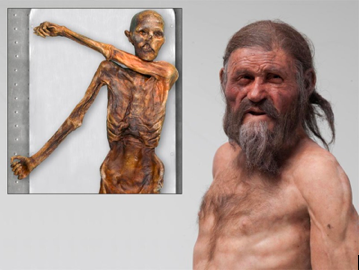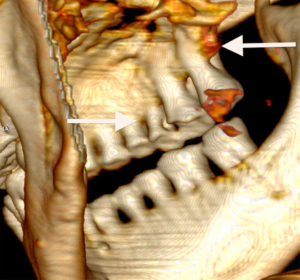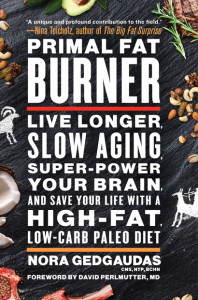
5,300 years ago in what is now the Oetzal Alps between Austria and Italy, a man that researchers today decided to name “Ötzi” lived and also met an untimely and suspicious death. His frozen and mummified body was discovered at nearly 11,000 feet of altitude melting from glacial ice in 1991 by a pair of German hikers. Archaeologists considered this the discovery of the century—an intact, frozen semi-prehistoric man. His body and possessions were almost perfectly preserved. He was about 46 years of age, 5’2” (fairly average height for his day) and evidently a person of some higher status due to the quality of his possessions. His likeliest cause of death, as forensic researchers determined, was actually murder…but his health was anything but stellar the day he died.
Even though he lived several thousand years ago, Ötzi was already quite clearly a neolithic (agricultural era) human, even as he may have also hunted for some of his food along the way. Let’s just say that agriculture didn’t do Ötzi any favors. For starters, he apparently suffered severe tooth decay and even had the grains that helped cause that still stuck in his teeth when they discovered his body. Along with lousy oral health he also showed signs of suffering arteriosclerosis and advanced arthritis. He may be portrayed by the media as a prehistoric human, but his state of health was decidedly forged by the dietary pitfalls of an agricultural-based society. According to his stomach contents, bread was part of his last meal. Despite whatever hunting and gathering he may have done along the way he clearly wasn’t “Paleo” in many of his dietary choices. He was basically modern enough to have suffered some of the earliest diseases of modern civilization. In short, Ötzi was an agriculturally-influenced, medical mess.

His shorter stature and ill health was actually typical of many post-agricultural societies. Early agriculturalists commonly suffered mineral deficiency-associated diseases like rickets, stunted growth and bone mineral disorders. Osteoporosis, skeletal abnormalities, malnutrition, birth defects, dental malocclusion and degenerative disease also became much more commonplace once we adopted the widespread consumption of grains (yes–including whole grains). Cereal-based diets also commonly led to numerous other vitamin and mineral deficiencies not typically shared by their more Stone Age ancestors; such as pellagra, scurvy, beriberi, as well as vitamin A, iron and zinc deficiencies (the minerals contained in grains are actually poorly available to us, if at all, due to the presence of a substance known as phytic acid—something never mentioned by proponents of the government “food pyramids”, or the commercial purveyors of supposedly “healthy whole grains”). According to the researchers analysis, Ötzi’s dental problems show the results of switching from a strictly hunter-gatherer to an agricultural one.
Grain consumption has been linked with allergies, food sensitivities, autoimmune disorders (now numbering in excess of 100 that have been identified thus far, and 40 additional diseases thought to have an autoimmune component), numerous cancers, pancreatic disorders, mineral deficiencies, arthritis, cardiovascular disease, celiac disease, epilepsy, cerebellar ataxia’s, dementia, degenerative diseases of the brain and central nervous system, peripheral neuropathies of axonal or demyelinating types, and myopathies as well as autism and schizophrenia, to name a few of our more common modern day health-related issues.
Contrast this with the primary cause of death in more Stone Age hunter-gatherers: accident and infection. That’s about it. As long as we survived that, we stood pretty good odds of making it to old age without the chronic degenerative diseases that plague the elderly and not so elderly today. Fast-forwarding to today— as we continue to follow this slippery slope of embracing products and byproducts of Monoculture Agriculture and the ever-powerful Food Industry, according to new findings, people today are being diagnosed with disease 33 percent (15 years) faster than their grandparents. Age 30 has become the new 45 in reference to on-setting disease. This is all relatively new—and NOT because we suddenly began consuming more animal-based foods or fats (which our ancestors have eaten consistently for close to 3 million years)!
Certain popular books today encourage those of us that have been smart enough to shed non-essential and highly problematic grains from our diet, to actually bring wheat back into our diets again. Really? Do we really want this (even as it may be telling some folks what they want to hear)? So much is wrong with this idea that it isn’t even funny….but I’ll save the rest for another article.
Even as an agricultural lifestyle allowed us to live in better protected, safer and controlled environments, an agricultural lifestyle wasn’t exactly our fast track to optimal health and longevity. Even as human populations exploded (ultimately leading to planetary overpopulation issues we face today), life expectancy actually declined by half—relative to our supposedly short-lived Paleolithic forebears–early on into the agricultural revolution. In fact, between the Neolithic Revolution and the late 18th century human life expectancy never exceeded roughly 25 years! What basically improved longevity in more modern times sure as heck wasn’t our back-breaking, nutrition- and health-compromising agricultural lifestyle, but instead (apart from protection from the elements and predators) better technology, sanitation, and modern economic growth.
When researchers compared the health of farmers versus hunter-gatherers they found that the farmers suffered much higher rates of infection due to the concentration of stationary human populations in farming communities, much poorer nutrition due to their increased cereal grain intake and reduced meat/fat intake and problems with mineral absorption due to the effects of the cereal-based diet (Cohen, 1989). Neolithic farmers were shorter, had many more health-related issues and a lower life expectancy relative to Mesolithic hunter-gatherers. We also became much more vulnerable to famine; not to mention the oppression and control (and the other delightful things) that come with concentrated population centers and opportunistic ruling class hierarchies, not the least of which has been an unending and unprecidented pattern of full scale wars.
Agriculture also served to shift our macronutrient content from a focus on dietary fat and protein to a diet based far more upon carbohydrate intake. The impact on human health in this regard has not been trivial. Only in modern times, for instance, have we humans developed an emergency need to lower blood sugar through the unnaturally chronic and metabolically dysregulating release of insulin. We were never designed to tolerate being marinated in a caustic and inflammatory mix of glucose (and other sugars) and insulin 24/7. This is a modern-day development and one we need to rethink if we are ever to reclaim our primal birthright as a species of foundational health.
Agriculture cost us as a species, big time. We’ve spent the last 500 generations—or less, less than 0.4% of our evolutionary history —after we spent more than 100,000 generations (99.9+%) on a mostly meat and fat diet—eating a diet that is demonstrably and increasingly unnatural to our species. Pre-agricultural paleolithic hunters and gatherers derived most of their calories from about 100-200 different species of wild animals (meat and fat being as much as 90% of their dietary economy)…and to a lesser degree fibrous vegetables, greens and nuts/fruits.
Suddenly, all of about 17 species of plants today, most of which are entirely new to the human diet—are providing 90 percent of the world’s food supply. That’s an insanely huge flip-flop, and it has NOT been a healthy one. The toll this has taken upon our health, not to mention the health of the planetary environment is immeasurable and tragic.
The energy and nutrient value of starch-based foods we have come to rely upon in modern times are considerably inferior to animal foods, even after cooking. Sugar-based foods in particular have led to an epidemic of metabolic disorders, including obesity, type 2 diabetes and a huge variety of sugar-hungry cancers.
And these foods aren’t just problematic in today’s world. They have been problematic from the beginning of their widespread consumption. They were literally never the cornerstone of optimal health.
Grains and legumes, much less refined carbohydrates weren’t necessarily all to blame for poor health related to starch consumption in pre- (and post-) agricultural humans. An interesting study was published in the Proceedings of the National Academy of Sciences in January of 2014 revealing that pre-agricultural starchy carbohydrate consumption led to ill health and dental disease in prehistoric hunter-gatherers from time to time, as well. In other words, we can’t blame it all on farming. The research by a team from Oxford University, the Natural History Museum, London, and the National Institute of Archaeological Sciences and Heritage (INSAP) in Morocco actually showed that widespread tooth decay occurred in a hunter-gathering society in Morocco several thousand years before the dawn of agriculture. The team analyzed 52 sets of adult teeth from hunter-gatherer skeletons found in Taforalt in Morocco, dating between 15,000 and 13,700 years ago. Unexpectedly, they found evidence of decay and abscesses in more than half of the surviving teeth, with only three skeletons showing no signs of cavities. Excavations revealed evidence of the systematic harvesting and processing of wild foods, including sweet acorns, pine nuts and land snails. The guilty food? Sweet (starchy) acorns, apparently. In other words, even naturally occurring starch in its whole food, wild state wasn’t an optimal food for our ancestors, either.
Dental abnormality such as malocclusion and dental crowding (attractive as they are) first became common among the world’s earliest farmers some 12,000 years ago in Southwest Asia, according to findings published (04 Feb 2015) in the journal PLoS ONE. Pre-agricultural, paleolithic hunter-gatherers, on the other hand had almost no malocclusion and dental crowding demonstrated in any research to date. In a Science Daily article illuminating highlights of this PLOS ONE study, interviews with the research scientists behind the study revealed that, “Our analysis shows that the lower jaws of the world’s earliest farmers in the Levant, are not simply smaller versions of those of the predecessor hunter-gatherers, but that the lower jaw underwent a complex series of shape changes commensurate with the transition to agriculture,” says Professor Ron Pinhasi from the School of Archaeology and Earth Institute, University College Dublin, the lead author on the study.
“Our findings show that the hunter gatherer populations have an almost “perfect harmony” between their lower jaws and teeth,” he explains. “But this harmony begins to fade when you examine the lower jaws and teeth of the earliest farmers.”
In the case of hunter-gatherers, the scientists from University College Dublin, Israel Antiquity Authority, and the State University of New York, Buffalo, found a correlation between inter-individual jawbones and dental distances, suggesting an almost “perfect” state of equilibrium between the two. While in the case of semi-sedentary hunter-gatherers and farming groups, they found no such correlation, suggesting that the harmony between the teeth and the jawbone was disrupted with the shift towards agricultural practices and sedentism in the region. This, the international team of scientists say, may be linked to the dietary changes among the different populations.
The diet of the hunter-gatherer was based on “hard” foods like wild uncooked vegetables and meat, while the staple diet of the sedentary farmer is based on “soft” cooked or processed foods like cereals and legumes. With soft cooked foods there is less of a requirement for chewing which in turn lessens the size of the jaws but without a corresponding reduction in the dimensions of the teeth, there is no adequate space in the jaws and this often results in malocclusion and dental crowding.
The link between chewing, diet, and related dental wear patterns is well known in the scientific literature. Today, malocclusion and dental crowding affects around one in five people in modern-world populations. The condition has been described as the “malady of civilization.”
In short, we humans were fundamentally designed by our evolutionary selective pressures and earliest dietary preferences to be fat-heads, not potato-heads (or acorn-heads), much less grain-brains.
Ketones, the basic energy units of fat, along with free fatty acids are an extremely abundant, reliable, stable and steady source of fuel, even in the absence of regular meals. Furthermore, brain cells (and delicate brain tissue) are more vulnerable than just about any other tissue to the ravages of glycation and the oxidation or free radical activity that glucose and glycation attracts. The brain actually prefers ketones (or, more specifically, BOHB) to glucose as it’s primary source of fuel (from the standpoint of being non-damaging, as well as being a “superfuel”, yielding even more ATP than either glucose or free fatty acids). Interestingly, acetoacetate (another form of ketone body) is the preferred source of energy in our heart muscle and renal cortex… but your brain can also use that if it needs to, and it adds needed balance to BOHB in those who may be seizure-prone. Nature was beyond wise to design us this way, but unfortunately most people today fail to take advantage of this incredibly elegant and efficient design, instead diverting away from the energy we were mostly meant to rely upon and forcing an unnatural and enslaving dependence upon carbohydrates as a primary source of fuel.
Think about what we’ve been mostly eating for the last 10,000 years while our brains have been progressively shrinking and our collective health increasingly deteriorating…
The most obvious and far-reaching dietary change during the last 10,000 years is, of course, the enormous drop in consumption of high-energy, fat-rich foods of animal origin which formed easily 90% of our diet in Paleolithic times, to as little as 10% today, coupled with a large rise in less energy-dense grain consumption. This switch—this literal flip-flop to a carbohydrate-based diet embraced by the corporately controlled USDA Food Pyramid (and other nearly identical guidelines offered in Europe/UK and Australia/New Zealand) is far from optimal and far from benign in its effects.
In fact, more recently, there has been a long overdue, detailed analysis of the US National Health and Nutrition Examination Survey (NHANES) data, which has been measuring dietary trends, caloric consumption and the body heights and weights of americans for nearly 50 years. What it revealed is both shocking and telling:
It turns out that Americans HAVE been following the rules and taking the mainstream government guidelines to heart in their dietary choices (all the while the health of the public has been deteriorating). –And even more shockingly, It seems the more obediently we have followed the rules, the sicker and more obese we have become as a society. Trading animal source foods for carbs and animal fats for vegetable oils has effectively pushed the collective health of Americans (and others following similar guidelines the world over) to the brink of collapse.
It’s well past time we take the USDA Food Pyramid and turn it upside down. I think even Ötzi would agree.
~Nora
(Check out my new weekly online program: Primal Restoration ®)
References:
1 Rollo, F.U. et al., “Ötzi’s last meals: DNA analysis of the intestinal content of the Neolithic glacier mummy from the Alps.” PNAS October 1 vol 99 no 99 (2002)
2 L Hallberg, et al. “Phytates and the inhibitory effect of bran on iron absorption in man.” Am J Clin Nutr. 1987; 45(5): 988.
3 Seiler R, Spielman AI, Zink A, Rühli, F. “Oral pathologies of the Neolithic Iceman, c. 3,300 BC”. European Journal of Oral Sciences (2013) 1-5
4 http://www.livescience.com/28608-otzi-iceman-had-bad-teeth.html
5 Cordain, L. Cereal grains: humanity’s double-edged sword. World Rev Nutr Diet. 1999; 84:19-73.
6 Hulsegge G, Susan H, Picavet J , et al. Today’s adult generations are less healthy than their predecessors: generation shifts in metabolic risk factors: the Doetinchem Cohort Study. European Journal of Preventive Cardiology. Published online April 10 2013 (http://cpr.sagepub.com/content/early/2013/04/08/2047487313485512.abstract)
7 Angel JL. Health as a factor in the changes from hunting to developed farming in the eastern Mediterranean. In: Cohen MN, Armelagos GJ, editors. Paleopathology at the origins of agriculture. New York: Academic Press, 1984:51–73
8 Fogel RW. The fourth great awakening and the future of egalitarianism. Chicago: Univ. Chicago Press, 2000:48,137–75.) and (Kuznets S. Modern economic growth: rate, structure, and spread. New Haven: Yale Univ. Press, 1966:8–16.
9 Acsa’di, G.Y., and J. Nemeskeri, (1970), History of Human Life Span and Mortality, (Akademiai Kiado, Budapest).
10 Cohen M. N.,(1989),Health and the Rise of Civilization (Yale Uni. Press: New Haven).
11 Diamond, J. (1997),.Guns,Germs,andSteel:TheFatesofHumanSocieties.(Norton, New York).
12 Wesidorf, J. L. (2006) “From Foraging to Farming: Explaining the Neolithic Revolution,”Journal of Economic Surveys,19, 561-586
13 Humphrey LT, De Groote, I, Morales J, Barton N, Collcutt S, Bronk Ramsey C, Bouzouggar A. “Earliest evidence for caries and exploitation of starchy plant foods in Pleistocene hunter-gatherers from Morocco.“Proceedings of the National Academy of Sciences, 2014; DOI: 10.1073/pnas.1318176111
14 Pinhasi R, Eshed V, von Cramon-Taubadel N. “Incongruity between Affinity Patterns Based on Mandibular and Lower Dental Dimensions following the Transition to Agriculture in the Near East, Anatolia and Europe.” PLOS ONE, 2015; 10 (2): e0117301 DOI: 10.1371/journal.pone.0117301
15 “Malocclusion and dental crowding arose 12,000 years ago with earliest farmers.” Science Daily. February 4, 2015.
16 Cahill GF Jr, Veech RL. “Ketoacids? Good medicine?” Trans Am Clin Climatol Assoc. 2003;114:149-61; discussion 162-3
17 John L. Tymoczko, Lubert Stryer and Jeremy Berg. Biochemistry 7th Edition. W. H. Freeman; Seventh Edition edition (December 24, 2010), Chapter 22 (Fatty Acid Metabolism).
18 Eaton, S Boyd, Eaton, Stanley B III. Evolution, diet and health. Presented in association with the scientific session, Origins and Evolution of Human Diet. 14th International Congress of Anthropological and Ethnological Sciences, Williamsburg, Virginia, 1998.
19 Cohen E, Cragg M, deFonseka J, et al. “Statistical review of US macronutrient consumption data, 1965-2011: Americans have been following dietary guidelines, coincident with the rise in obesity.” Nutrition J. 2015. 31: 727-732.



Great article. Thanks Nora.
(Currently half way through “Primal Fat Burner”).
It gets annoying when some of the high-carb paleo advocates keep trotting out “evidence” that we are “meant” to eat grains in the form of an isolated speck of a grain in some Neanderthal’s fossil tooth. Sure, they probably tossed a handful of some wild rice they found into the stewpot now and then but that is not the same thing as it being a major source of sustenance. Otzi is the evidence of what happens when it does become central to the diet. Maybe bread is called “the staff of life” because when you eat it, you need a staff to stand up. 🙂
That’s funny! 🙂
thanks for the great post Nora! Jeez, it’s almost a book. Apropos to your post is that I just watched an interview by Dr Merrcola with Dr Douillard, who has written a book called “Eat wheat” watch the video if you are interested.
Douillard mentions that wheat is good, and we were eating wheat berries before we were eating meat. My first thought was “were we starving?” but decided to look up the one reference he provided, a University of Utah study. http://archive.unews.utah.edu/news_releases/a-grassy-trend-in-human-ancestors-diets/
The interesting part of that study for me was this paragraph
“If early humans ate grass-eating insects or large grazing animals like zebras, wildebeest and buffalo, it also would appear they ate C4 grasses. If they ate fish that ate algae, it would give a false appearance of grass-eating because of the way algae takes up carbonate from water, Cerling says. If they ate small antelope and rhinos that browsed on C3 leaves, it would appear they ate C3 trees-shrubs. Small mammals such as hyrax, rabbits and rodents would have added C3 and C4 signals to the teeth of human ancestors.”
Which led me to make this comment on Dr Mercola’s youtube channel
So, my takeaway is this: if humans ate the meat of animals that ate C3 vegetation, it would look like the humans ate C3 vegetation.if humans ate the meat of animals that ate C4 vegetation, it would look like the humans ate C4 vegetation.note the fish that ate algae point. High Omega 3 contributed to brain growth, much better than eating wheat berries I wouid guess.I think possibly Dr John Douillard might have misinterpreted this study? He mentioned ‘many’ studies, but this was the only one he cited, so it is the only one I could check. Maybe there are studies that make his point, but I don’t think this one does that.
And maybe I hit the wrong study.
Very well written article.
As a Functional Practitioner I find it easy to follow this lifestyle so I can set an example for my clients. My biggest struggle is that I slip up with my kids.. not because I’m lazy and don’t care but really they are the only ones that don’t get the treats every one else has at school. It really bothers my older boy and I breakdown and give them the occasional GF sandwich, crackers and GF pizza. Tips on how to implement this and make them feel good about it would be appreciated, either resources or personal experience.
Also a question on raw foods. Article mentions the strong jaws as a result of chewing fibrous vegetables. I am in Canada where we need to keep warm and that usually involves cooked food. Would I assume from this article that winter foods not need to be cooked. I have always been taught they needed to be, but that could be because our digestion has become so weakened over time that we couldn’t handle it. I’d still cook them but curious how that came to be.
Thanks for a great article. Looking forward to the next one 🙂
That bread line is a keeper. In fact, it’s a stealer, so I’m stealing it! I’ve give appropriate attribution for the first 5 or 6 times I use, it, promise.
As pre-agricultural humans surely lacked masses of carbs in their diet, I’d love to know if those recommendations of at least 30 gramms fiber per day is really required? I successfully battled my diabetes type 2 and am still losing weight with less than 30 grams of carbs each day and struggle to raise my fiber intake to as high as 20 to 25 gramms.
Does this suffice if I still feel fine?